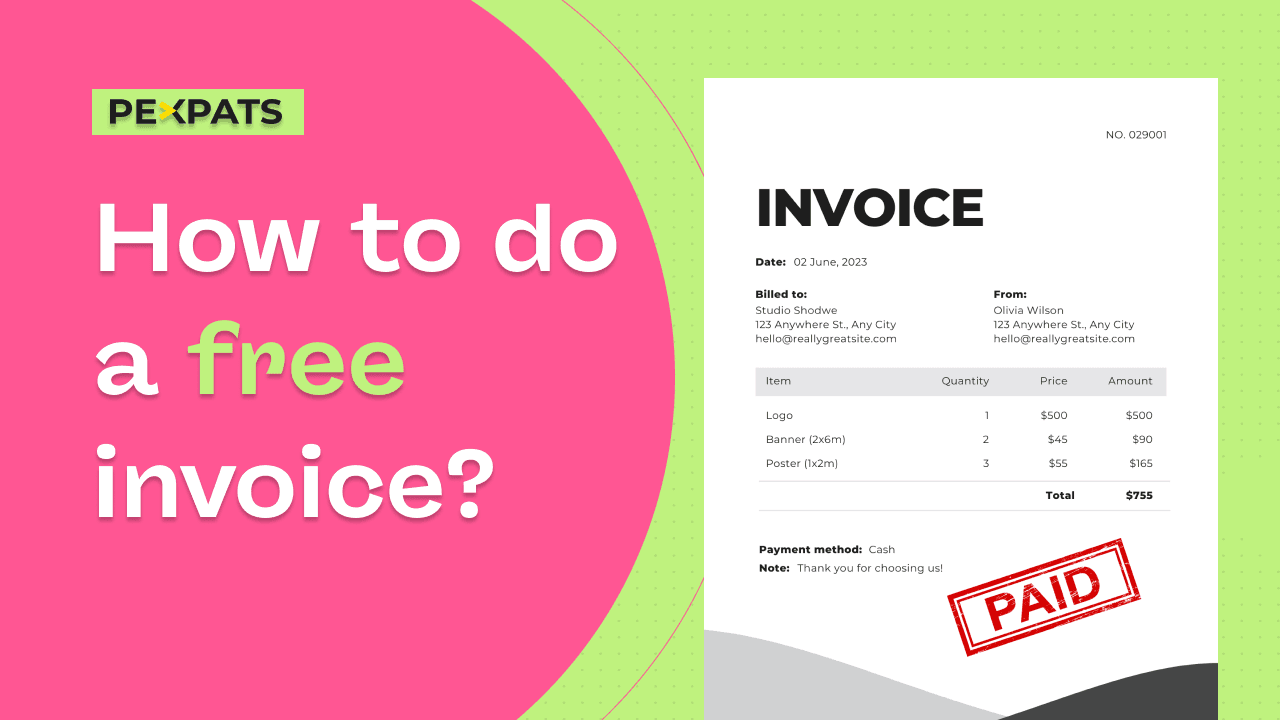Follow These 5 Simple Steps to Create a Czech Invoice
In this guide, we will show you how to create a Czech invoice, whether you are a business owner or a trade license holder. If you’re a VAT (Value Added Tax) payer or exempt, this guide has you covered.
Invoicing in the Czech Republic is easy once you know the mandatory fields and steps. Whether you’re invoicing in Czech koruna (CZK) or a foreign currency, we’ve got everything you need to ensure your invoices are accurate, legal, and clear.
Step 1: Personal Information You Must Include on Every Czech Invoice
First, every invoice you create must contain your personal identifying information for both the recipient and the Czech tax authorities. This information will include fields for the name of the service / product supplier, business address, bank details, and business ID codes. Here, there must also be the invoice number both for personal / recipient records and for tax purposes.
Supplier Name - Always include your name or the name of your registered business.
Invoice Number - Record invoice numbers in ascending, consecutive order. Do not skip numbers. (For more info, see our in-depth guide on Czech Invoicing.)
IČ0 Number - This is a unique Company Registration Number that you receive after registering as a s.r.o. business or trade license holder. This must be on every invoice.
Bank and Bank Account Number - Be sure to provide the name of your bank and the bank account number where you expect to receive payment.
Payment Method - Include “Bank transfer” if receiving to a bank account. If receiving in hand, specify the invoice must be paid in fiat cash.
Note: If you are not a registered VAT payer, you may also state this on the invoice, although it is not necessary.
Step 2: Fields for VAT Payers or International Businesses
If your business is VAT-registered or operates internationally, you need to include some additional details:
DIČ Number - Filling in this field is only mandatory for trade license holders and businesses registered as VAT payers. The DIČ registration number represents your tax identification number and is provided only after receiving an IČ0. (Check the EU Database of VAT numbers for correct formatting.)
IBAN - Complete this field if you have an international bank account number where you expect to receive payment.
BIC / SWIFT - This is also for businesses operating internationally. It consists of 8-11 characters used to identify a specific bank in international transactions.
Variable Symbol - Each Variable Symbol is simply the reference number for the client’s record-keeping. For instance, this might be the invoice number.
Note: If you are not a registered VAT payer or operating internationally, these fields can remain blank when invoicing.
3. Recipient Information to include in Czech Invoicing
Next, fields for recipient information are often in the top-right-hand part of the invoice, opposite from your business information.
Here, you must clearly record who exactly you’re invoicing (whether a business or a natural person), and their identifying information. This includes the name and address of the business/person, and their company registration (IČ0). For Czech invoicing with VAT, use the recipient’s tax ID (DIČ) number.
Name of Natural Person or Business Entity - For example, specify if it’s Jane Doe (person) or Jane Doe’s Bakery (business).
Company Registration or Tax ID # - Include this information after the recipient’s name/business name.
Address of Recipient - Include street address, country, city, and postal code registered to the person or business.
Step 4: Invoice Details (Issue Date, Due Date, and Description)
Every Czech invoice must include clear information about the transaction:
Issue Date: The date the invoice is created and sent.
Due Date: The date by which payment should be made.
Invoice Description: A detailed list of services or products, their rate, quantity, and total amount.
Take the following for example if you are invoicing for yoga classes, where you charge 400 CZK per hour and you are charging for 5 hours:
Issue Date: 31.10.2025
Due Date: 07.11.2025
Description: Yoga Lessons
Rate: 400 CZK
Quantity: 5
Total Amount: 2,000 CZK
5. How to do Czech invoices in foreign currency
Finally, if you need to invoice a person or business from the Czech Republic in a foreign currency, it’s simple. In fact, you are permitted by law to invoice in the form of any currency.
To do this, include the exchange rate of the foreign currency to CZK on the date of invoicing. Reference the Czech National Bank on the day you create the invoice to find the accurate exchange rate.
As an additional note, you may also choose to include this in your Czech invoice. For example, include the following.
“Exchange Rate of CNB on DATE: 1 EUR = 25,32 CZK.”
Want to streamline your invoicing?
Try our 100% Free Invoice Generator for invoicing in the Czech Republic. Search by IČ0 to quickly find and fill in all supplier and recipient information, or complete all fields manually. Simply fill out, preview, & download your ready-to-deliver invoice.
Want even greater savings in time and effort? Create a free user account for autofill next-invoice number, create payment reminders, add bank accounts, address books, and more. Pexpats provides all the tools you need to do Czech invoices correctly every time.

